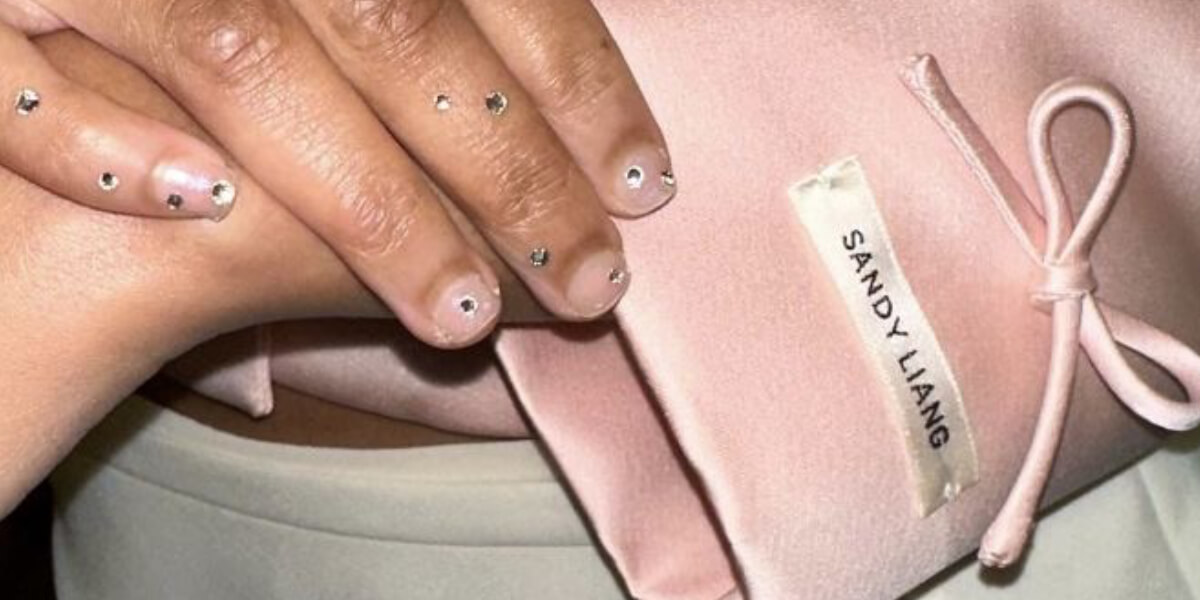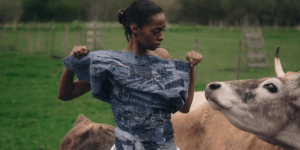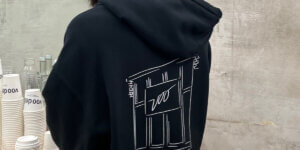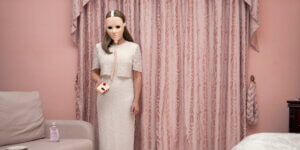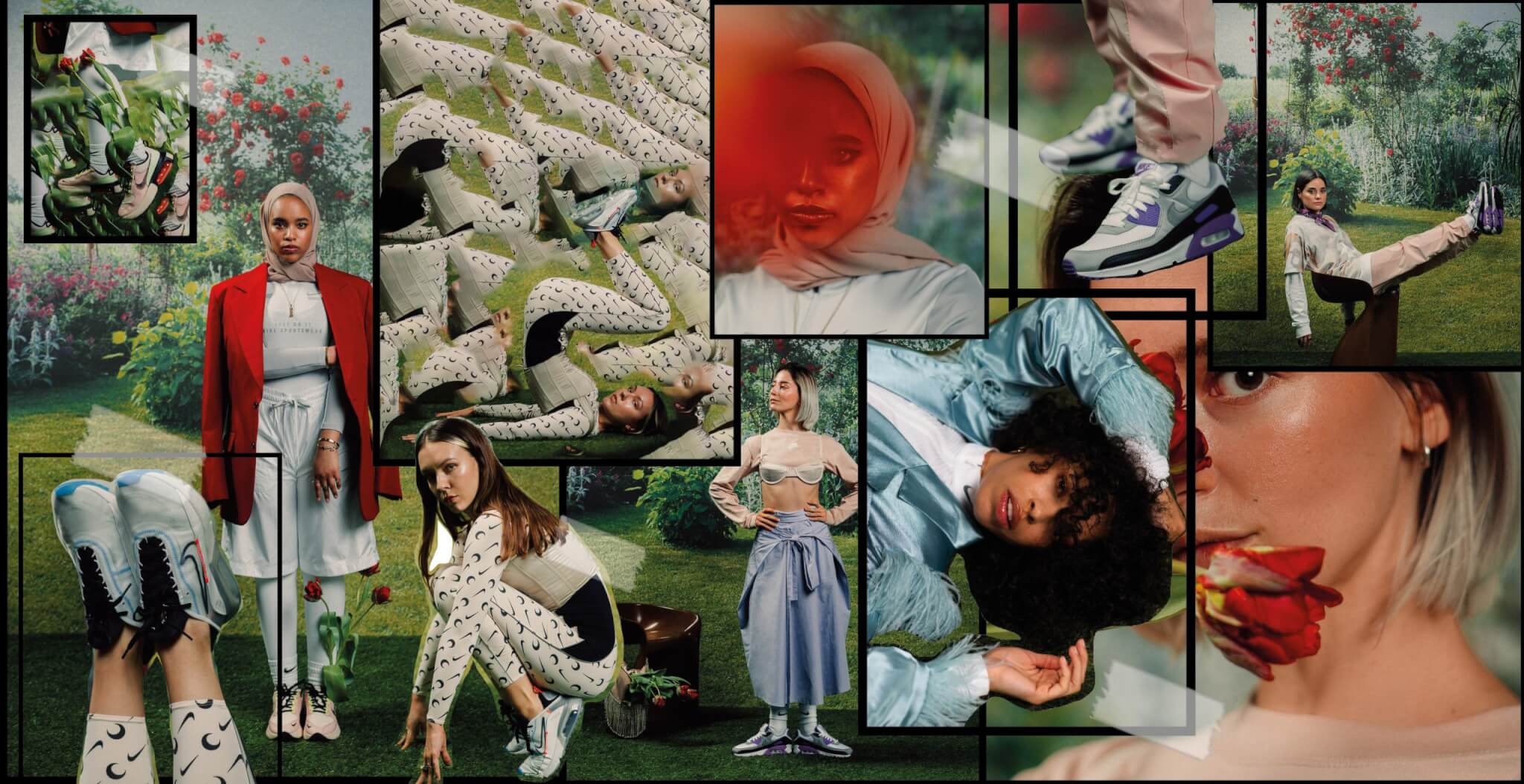Lately, everyone and their mother has been wearing bows in their hair. This ubiquitous ribbon has slowly but surely made its way into our wardrobes, our accessories and even our beauty routines. As we navigate the whimsical world of bows, the question arises: Is there more to this TikTok-born trend?
The bow’s journey from a simple, nostalgic adornment to a major fashion movement can be traced back to recent runway shows. During New York Fashion Week, we witnessed a bow extravaganza with designers like Sandy Liang, Tanner Fletcher, and Helmut Lang embracing the trend. From bow bags to bow suits and even giant inflatable bows, it was a ribbon-filled spectacle. Celebrities, too, joined the bow bandwagon, with the likes of Sia, Julia Fox, and Doja Cat incorporating bows into their outfits and performances.
This bow fever soon spread beyond New York, making appearances at London and Milan Fashion Weeks. Simone Rocha sent models down the runway wrapped like presents in off-the-shoulder bow dresses, and Aniye Records used small bows as nipple covers on sheer black lace. The bow’s dominance on the runway seemed to know no bounds.
The runway was just the beginning. Following Miu Miu’s AW22 show, their bow-adorned ballet flats became a cult favorite. Soon after, the bow trend transitioned from the runway to the screens of TikTok, where creative minds found countless ways to incorporate ribbons into everyday life. From coquettifying a top by tying ribbons on each arm to adding ribbons to the bottom of jeans, the possibilities seemed endless. Ribbons began to appear on seemingly ordinary objects, from hanging toilet paper rolls with bows to adding giant bows to wedding dresses.
Seann Altman, a content creator from Los Angeles, fell under the bow’s enchantment after being drawn to the ballet trend, gradually incorporating ribbons into his outfits. His TikTok account is now filled with innovative ways to style ribbons.
Mandy Lee, a trend analyst, points out that the current bow obsession is driven by various factors. The accessibility of ribbons, the emphasis on hyperfemininity, and the rise of aesthetics like “ballet-core” and “girlhood” have all contributed to the bow’s enduring appeal. Bows, in their various forms, have become symbols of rebellion against the minimalist trend in the era of “quiet luxury.”
While bows evoke childhood nostalgia, they are also a means of personalization and customization, providing a unique identity in a world that often favors uniformity. Sporting a bow is a subtle nod to fellow ribbon-wearers, a shared understanding or vision.
The trend that started on TikTok gradually made its way into everyday fashion, inspired by coquette style and the celebration of girlhood. The trend is not limited to any particular gender, as Fletcher Kasell, co-creative director of the “genderless” brand Tanner Fletcher, noted that bows can be a mash-up of masculine and feminine elements. Bows have become a defining element of contemporary fashion, breaking the mold of minimalism and introducing a sense of playful rebellion.
Despite the idea that the bow trend may have peaked, it continues to evolve and expand. Every time it seems to have peaked, a new collaboration or release keeps the momentum going. It’s as if we’re navigating an infinite space filled with bows, with no end in sight. Adding hyper-feminine accessories to your look is nothing new, though. Take: Riot Grrrls or the Kinderwhore aesthetic.
In the early 90s, when riot grrrl started, female punks tended to be lead singers or groupies. This led to the perception that girls couldn’t play music and were mainly meant to be sex symbols. Young women were fed up with this and wanted to make music – and a scene – of their own.
The movement came out of the college music scene in Olympia, Washington. Forerunners of the movement appeared in San Francisco, Vancouver and other cities. Kat Bjelland, of Babes in Toyland, inspired much of the aesthetic of the movement, although she was never directly involved. The Riot Grrrl Manifesto emphasised female solidarity. Early zines such as ‘Girl Germs’ and ‘Bikini Kill’ dealt with traditionally feminist issues such as domestic violence, rape and male domination.
Unsurprisingly for a movement started by people in their early twenties, the riot grrrl philosophy was enthusiastic and a little juvenile. In early zines, writers such as Kathleen Hanna and Allison Wolfe spoke out against racism, sexism and other -isms, violence, peer pressure and discrimination in general with great indignation, if not coherence. Many articles drew on personal experience and explained what feminism meant to the writer.
The idea of translating this manifesto into design went hand in hand.
Elements of punk, no wave, heavy metal, grunge, kiddie whore and butch lesbian fashion were incorporated into the wardrobes of many a grrrl (and boi).
Then as now, many feminists want to be judged by their personality, not their looks. This does not mean that they neglect to express themselves. In fact, many third wave feminists rebelled against this aspect of second wave feminism, where looking sexy was considered a crime. Instead, third-wave feminists recognised that self-expression in dress, like all other forms of self-expression, could be a powerful political weapon.
Contrast was an important element of riot grrrl fashion. Women with dreadlocks, shaved heads or mohawks combined this with a dress and jump boots. A miniskirt could be paired with a shirt showing a muscular male torso. Sexuality was often emphasised, albeit from an aggressively feminine angle.
Kathleen Hanna, the lead singer of Bikini Kill, sometimes wore “slutty” clothing, such as Catholic schoolgirl skirts, while writing words like “SLUT” and “INCEST” on her body. According to Hanna, she did this to take away the negative connotations of the words and to anticipate the thoughts of young men looking at the photos.
Although the founders of Kinderwhore fashion were not part of the Riot Grrrl movement (especially Courtney Love, who hated it), some members were influenced by it. Early videos of Bikini Kill show the bass player in an old babydoll dress with a Peter Pan collar. The main difference, as far as I can tell, was that Riot Grrrl was political, while Kinderwhore was more of an artistic and aesthetic movement, and the idea of translating that manifesto into design came with that.
But other pop culture events have also contributed to the success of bows, ties and ribbons. Greta Gerwick’s Barbie film and the ongoing rise of #Barbiecore saw the feminine accessories make their way into our feeds and wardrobes. It is an attempt to shed typical femininity, the trend burying negative stereotypes of „dumb blondes” and femininity.
The bow trend of 2023 isn’t merely a fleeting fashion statement. It’s a celebration of individuality, a tribute to girlhood, and a nod to an era of hyperfemininity. Bows have woven themselves into the fabric of our lives, adorning everything from our outfits to our accessories and beyond. The bow is here to stay, and as for what the future holds, it seems the sky’s the limit.









